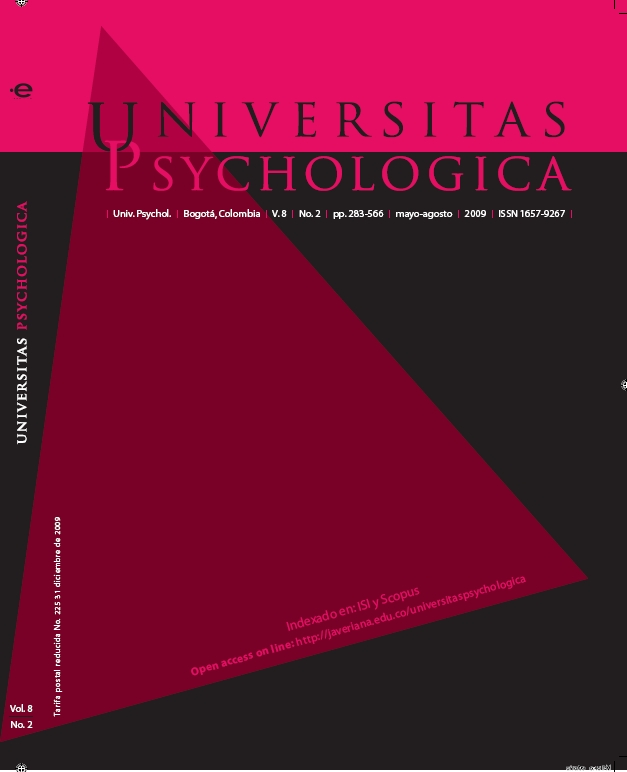Abstract
Several studies indicate that attachment in adults is feasible with modifications lifetime, especially in situations of change, as is the experience of chronic disease. This study aims to describe the attachment patterns of a group of patients with end-stage renal disease. We studied a group of 22 patients with this disease requiring dialysis, compared with a group of 22 adults for non-clinical sample (without disease), matching the participants in relation to sex and age. The results showed differences significant patterns of attachment in both groups. Clinically healthy individuals tend to have predominantly a secure attachment pattern, while that patients on dialysis tend to have a preoccupied attachment pattern.This journal is registered under a Creative Commons Attribution 4.0 International Public License. Thus, this work may be reproduced, distributed, and publicly shared in digital format, as long as the names of the authors and Pontificia Universidad Javeriana are acknowledged. Others are allowed to quote, adapt, transform, auto-archive, republish, and create based on this material, for any purpose (even commercial ones), provided the authorship is duly acknowledged, a link to the original work is provided, and it is specified if changes have been made. Pontificia Universidad Javeriana does not hold the rights of published works and the authors are solely responsible for the contents of their works; they keep the moral, intellectual, privacy, and publicity rights. Approving the intervention of the work (review, copy-editing, translation, layout) and the following outreach, are granted through an use license and not through an assignment of rights. This means the journal and Pontificia Universidad Javeriana cannot be held responsible for any ethical malpractice by the authors. As a consequence of the protection granted by the use license, the journal is not required to publish recantations or modify information already published, unless the errata stems from the editorial management process. Publishing contents in this journal does not generate royalties for contributors.


